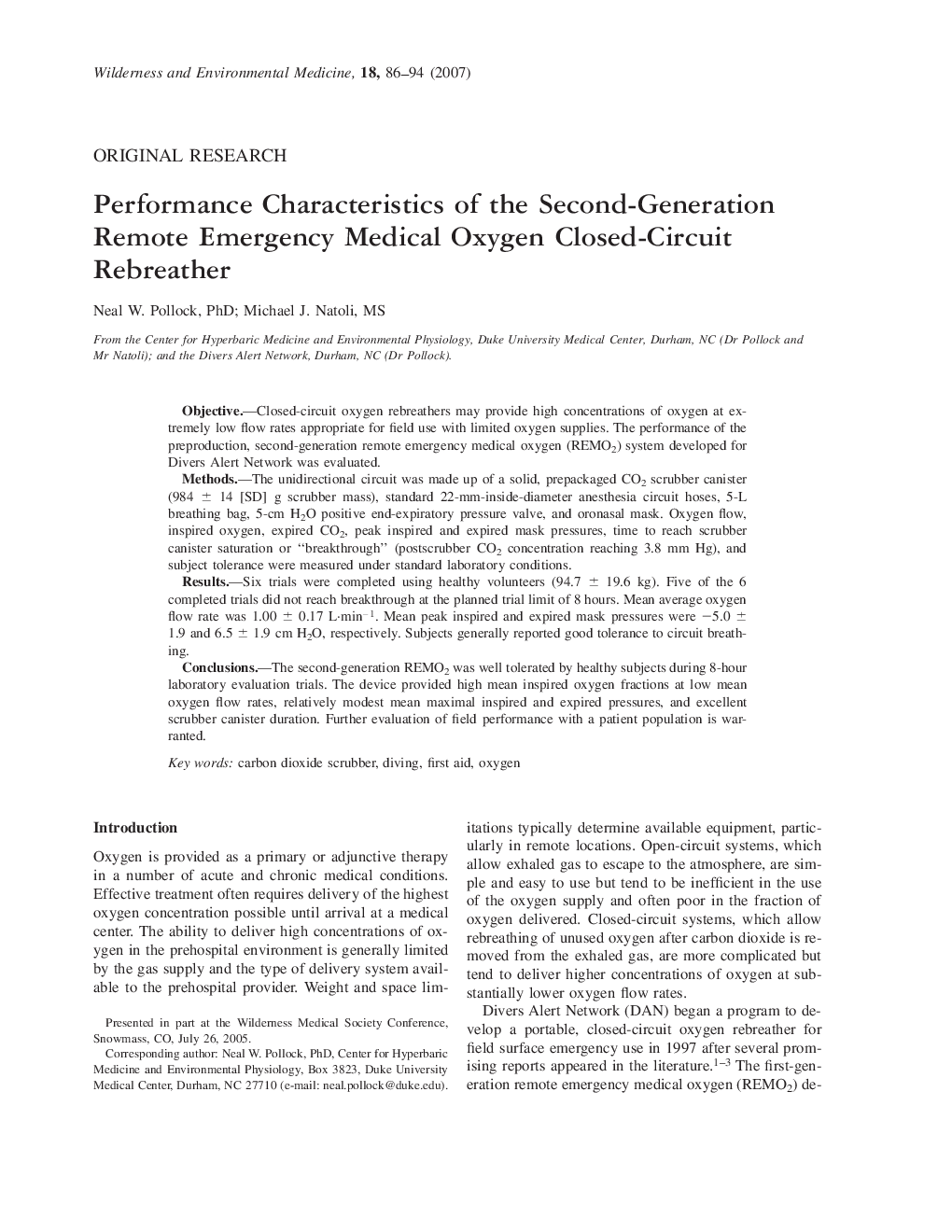| Article ID | Journal | Published Year | Pages | File Type |
|---|---|---|---|---|
| 2615487 | Wilderness & Environmental Medicine | 2007 | 9 Pages |
ObjectiveClosed-circuit oxygen rebreathers may provide high concentrations of oxygen at extremely low flow rates appropriate for field use with limited oxygen supplies. The performance of the preproduction, second-generation remote emergency medical oxygen (REMO2) system developed for Divers Alert Network was evaluated.MethodsThe unidirectional circuit was made up of a solid, prepackaged CO2 scrubber canister (984 ± 14 [SD] g scrubber mass), standard 22-mm-inside-diameter anesthesia circuit hoses, 5-L breathing bag, 5-cm H2O positive end-expiratory pressure valve, and oronasal mask. Oxygen flow, inspired oxygen, expired CO2, peak inspired and expired mask pressures, time to reach scrubber canister saturation or “breakthrough” (postscrubber CO2 concentration reaching 3.8 mm Hg), and subject tolerance were measured under standard laboratory conditions.ResultsSix trials were completed using healthy volunteers (94.7 ± 19.6 kg). Five of the 6 completed trials did not reach breakthrough at the planned trial limit of 8 hours. Mean average oxygen flow rate was 1.00 ± 0.17 L·min−1. Mean peak inspired and expired mask pressures were −5.0 ± 1.9 and 6.5 ± 1.9 cm H2O, respectively. Subjects generally reported good tolerance to circuit breathing.ConclusionsThe second-generation REMO2 was well tolerated by healthy subjects during 8-hour laboratory evaluation trials. The device provided high mean inspired oxygen fractions at low mean oxygen flow rates, relatively modest mean maximal inspired and expired pressures, and excellent scrubber canister duration. Further evaluation of field performance with a patient population is warranted.
